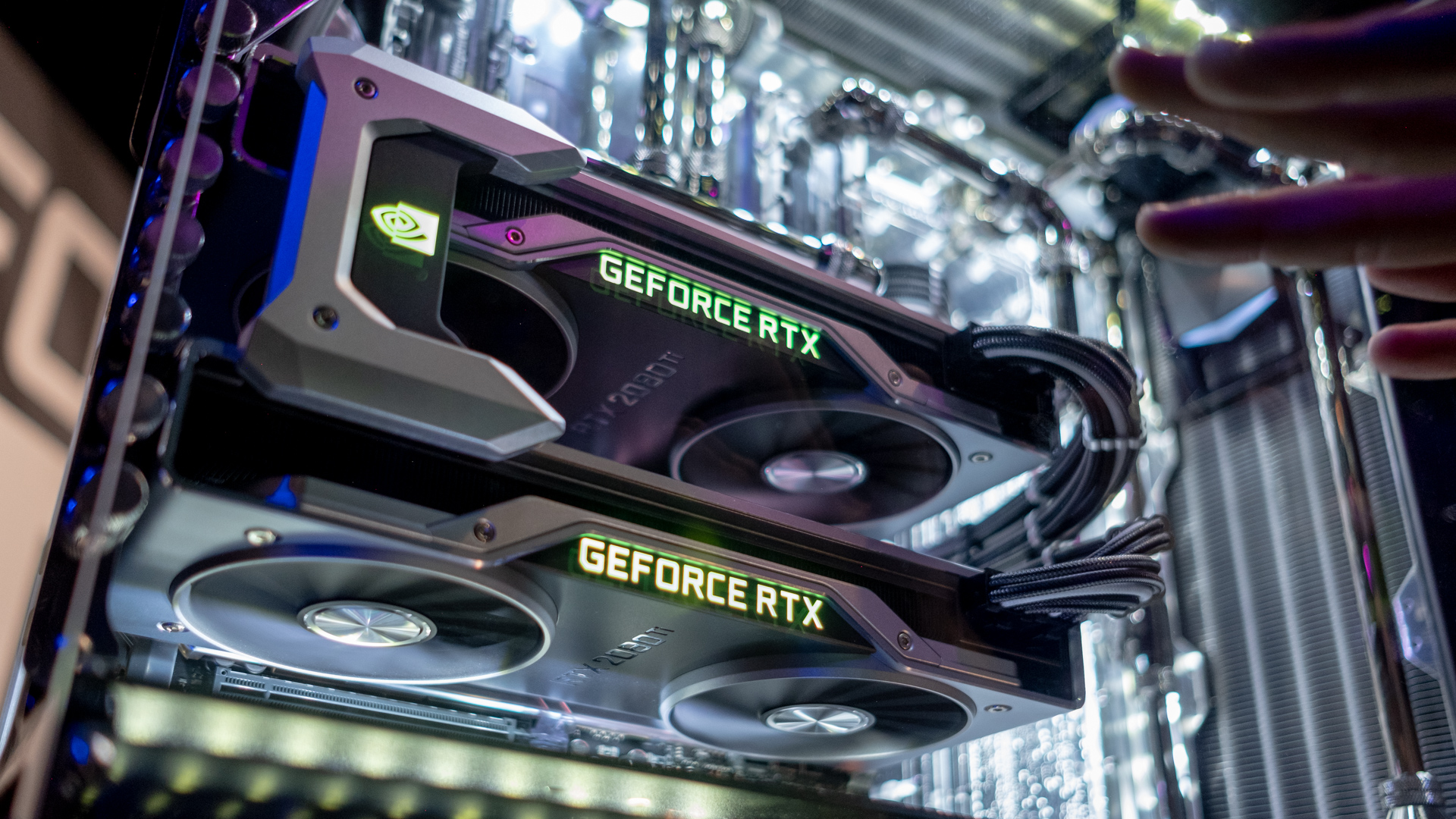A massive Nvidia graphics card just leaked, could it be the Nvidia GeForce RTX 3080?
GPU leaks are heating up

With Microsoft announcing the Xbox Series X's specs and placing emphasis on its 12 teraflops performance, it seems like everyone is paying attention to teraflops. And now we've seen a leaked benchmark that may hint towards what the Nvidia GeForce RTX 3080 may look like.
This benchmark was spotted by PCGamesN, and shows an Nvidia GPU with a whopping 33 teraflops of theoretical floating point performance. However, since teraflops aren't necessarily the most useful metric, it's lucky that the benchmarks for these unidentified graphics cards come with quite a bit more info.
- See the best Nvidia GPU
- Check out all the best PC games
- These are the best graphics cards of 2020
The two graphics cards showed up in Geekbench with 118 Streaming Mulitprocessors in one and 108 in the other. Following past Nvidia conventions, that would translate to 7,552 CUDA Cores in the former and 6,912 CUDA Cores in the latter.
That quantity of CUDA Cores would certainly set these new graphics cards up for high performance, well beyond what's seen in the current lineup for Nvidia chips. The larger chip packed some 24GB of memory, ran at 1.11GHz and pulled off an OpenCL score of 184,096 in Geekbench. That's a tidy lead over both the Nvidia Quadro RTX 8000 and Titan RTX, which both manage around 130,000.
Even the smaller chip, even though it has a whopping 48GB of VRAM and a lower 1.01GHz clock, managed a score of 141,654.
Not the cards you're looking for
There's quite a bit going on with these benchmarks, the reported specs, and what that means for the potential performance. For one, their measurement of FP32 performance is based on an assumption Nvidia may be doubling its floating points units in the next generation of GPUs, which would have the effect of doubling its performance in teraflops.
But, if Nvidia doesn't double those floating point units, there will be no doubling of the teraflops, and we'll actually be looking at a big card delivering a little under 17 TFLOPs and a smaller card delivering a hair under 14 TFLOPs.
Get daily insight, inspiration and deals in your inbox
Sign up for breaking news, reviews, opinion, top tech deals, and more.
Those aren't figures to scoff at, though, considering they're calculated from clock speeds that could still ramp up dramatically before these graphics cards ever hit the streets. Even if the bigger card is just at 17 TFLOPs right now, increasing its 1.11GHz clock speed to match the Titan RTX's 1.77GHz would boost its floating point performance to over 26 TFLOPs.
As spicy as that is, the specs and performance of these chips don't have that familiar scent of a consumer-oriented, gaming graphics card. In particular, the 24GB and 48GB of VRAM stand out. The Nvidia RTX 2080 Ti only offers 11GB of VRAM – the same amount as the GeForce 1080 Ti. So, there's little room to expect Nvidia to suddenly make such a massive boost to VRAM capacity.
It's more likely we're seeing professional cards that will just give us more hints at what will come down to the consumer level. With any luck, Nvidia won't keep us waiting too much longer, as an announcement of the Nvidia's next-gen GPUs at GTC is expected later this month.
Over the last several years, Mark has been tasked as a writer, an editor, and a manager, interacting with published content from all angles. He is intimately familiar with the editorial process from the inception of an article idea, through the iterative process, past publishing, and down the road into performance analysis.
